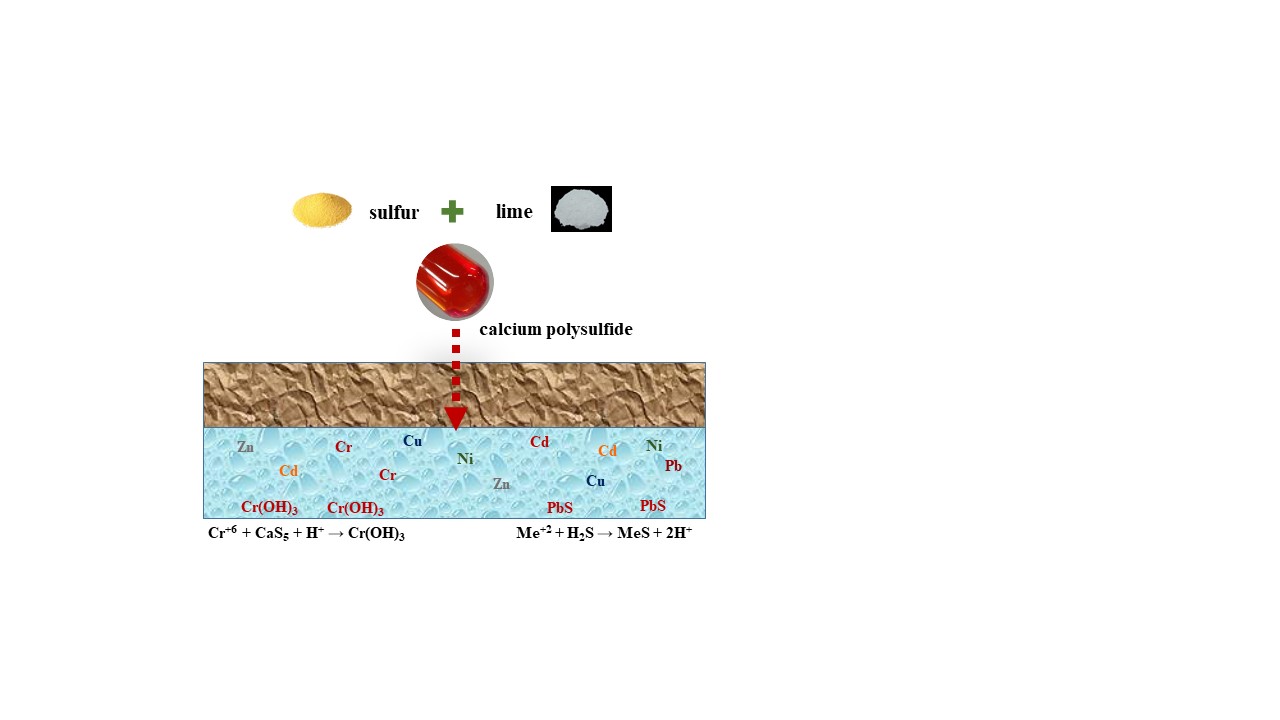You are currently viewing a beta version of our website. If you spot anything unusual, kindly let us know.
Preprint
Article
Feasibility of Remediation Lead, Nickel, Zinc, Copper and Cadmium Contaminated Groundwater by Calcium Sulfide
Altmetrics
Downloads
261
Views
233
Comments
0
A peer-reviewed article of this preprint also exists.
This version is not peer-reviewed
Abstract
Heavy metals contamination in groundwater often occurs in various industrial processes. Stud-ies have confirmed that polysulfide could reduce hexavalent chromium to trivalent chromium, achieving the effect of in-situ stabilization. For other heavy metals contamination in groundwa-ter, whether polysulfide also had a stabilizing ability to achieve in-situ remediation. This re-search focused on heavy metals except for chromium that often contaminated in groundwater, including lead, nickel, zinc, copper, and cadmium to explore the feasibility of using calcium polysulfide (CaSx) as an in-situ stabilization technology for these heavy metals contamination groundwater. Results showed that CaSx had a great removal efficiency for heavy metals lead, nickel, zinc, copper, and cadmium. However, for nickel, zinc, copper and cadmium, when CaSx was added excessively, complexes would be formed, causing the result of re-dissolve and this would also reduce the removal efficiency. Since it is difficult to accurately control the dosage of agents for in-situ groundwater remediation, the concentration of re-dissolved nickel, zinc, cop-per, and cadmium may not be able to meet the groundwater control standards. CaSx had high lead removal efficiency, and it would not cause re-dissolution due to excessive CaSx dosing. CaSx can be used as an in-situ stabilization technique for lead contaminated groundwater.

Keywords:
Subject: Engineering - Chemical Engineering
Copyright: This open access article is published under a Creative Commons CC BY 4.0 license, which permit the free download, distribution, and reuse, provided that the author and preprint are cited in any reuse.
Submitted:
09 August 2021
Posted:
11 August 2021
You are already at the latest version
Alerts
A peer-reviewed article of this preprint also exists.
This version is not peer-reviewed
Submitted:
09 August 2021
Posted:
11 August 2021
You are already at the latest version
Alerts
Abstract
Heavy metals contamination in groundwater often occurs in various industrial processes. Stud-ies have confirmed that polysulfide could reduce hexavalent chromium to trivalent chromium, achieving the effect of in-situ stabilization. For other heavy metals contamination in groundwa-ter, whether polysulfide also had a stabilizing ability to achieve in-situ remediation. This re-search focused on heavy metals except for chromium that often contaminated in groundwater, including lead, nickel, zinc, copper, and cadmium to explore the feasibility of using calcium polysulfide (CaSx) as an in-situ stabilization technology for these heavy metals contamination groundwater. Results showed that CaSx had a great removal efficiency for heavy metals lead, nickel, zinc, copper, and cadmium. However, for nickel, zinc, copper and cadmium, when CaSx was added excessively, complexes would be formed, causing the result of re-dissolve and this would also reduce the removal efficiency. Since it is difficult to accurately control the dosage of agents for in-situ groundwater remediation, the concentration of re-dissolved nickel, zinc, cop-per, and cadmium may not be able to meet the groundwater control standards. CaSx had high lead removal efficiency, and it would not cause re-dissolution due to excessive CaSx dosing. CaSx can be used as an in-situ stabilization technique for lead contaminated groundwater.

Keywords:
Subject: Engineering - Chemical Engineering
Copyright: This open access article is published under a Creative Commons CC BY 4.0 license, which permit the free download, distribution, and reuse, provided that the author and preprint are cited in any reuse.
Effect of Organic Matter on Cr(VI) Removal from Groundwaters by Fe(II) Reductive Precipitation for Groundwater Treatment
Anna Gröhlich
et al.
Water,
2017
Transformation of Chromium Speciation during High Hexavalent Chromium-Contaminated Soil Remediation by CPS and Biostimulation
Qing Wu
et al.
Agronomy,
2022
Simultaneous Removal of Arsenate and Chromate from Ground- and Surface- Waters by Iron-Based Redox Assisted Coagulation
Asterios Laskaridis
et al.
Sustainability,
2020
MDPI Initiatives
Important Links
© 2024 MDPI (Basel, Switzerland) unless otherwise stated





